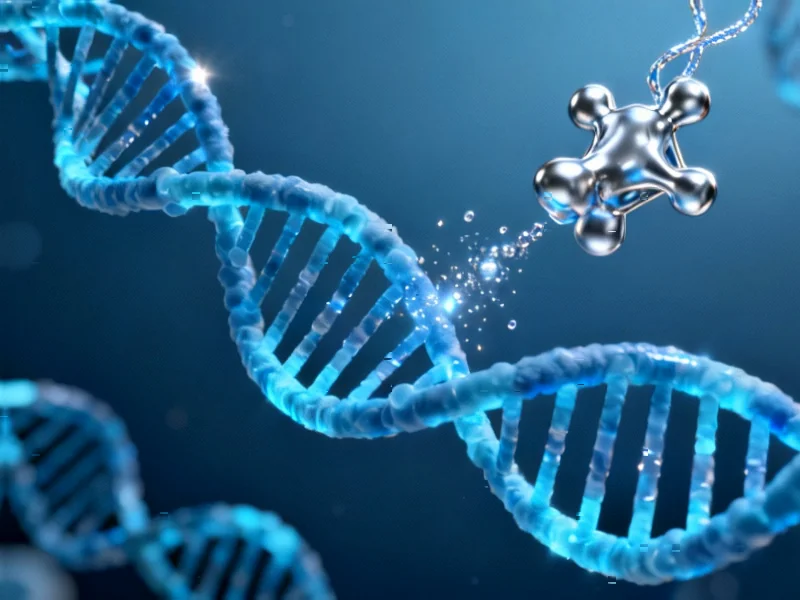RNA Structure Governs Cas13 Activation and Diagnostic Specificity
Recent research published in Nature Biotechnology reveals how RNA secondary structure fundamentally influences CRISPR-Cas13 activity, with significant implications for diagnostic applications. According to the report, RNA molecules form intramolecular base pairs that compete with the guide RNA (crRNA) for target binding, creating what sources describe as a “structural barrier” that modulates Cas13 activation.
Table of Contents
Isolating Structural Effects Through Engineered Occlusion
To disentangle the effects of structure from sequence variation, researchers developed a novel experimental approach using synthetic RNA constructs with controlled structural elements. The report states that scientists designed single-stranded RNA protospacers to which they could add variable secondary structure through RNA hairpins or complementary “occluder” oligonucleotides. Analysis indicates that increased secondary structure consistently decreased Cas13 activity across multiple orthologs, with activity varying by an order of magnitude for identical sequences with different structural occlusion.
Sources indicate that traditional thermodynamic models failed to explain the observed activity reduction, with the report noting that “the system temperature would have to be ~7,500 K to match an equilibrium model to the measured Cas13 activity reduction.” This discrepancy led researchers to propose an alternative strand displacement framework where Cas13 binds to unstructured regions and undergoes a random-walk process to displace occluding strands.
Massively Multiplexed Analysis Reveals Asymmetric Effects
Using a high-throughput microfluidic assay testing 4,608 simultaneous conditions, researchers uncovered unexpected asymmetries in Cas13 behavior. Analysts suggest that occluders binding to the 5′ end of the protospacer had significantly greater impact on Cas13 activity than those binding the same number of nucleotides at the 3′ end. The report states this asymmetry aligns with the strand displacement model due to differential cross-stacking interactions at the molecular level.
Perhaps more surprisingly, researchers identified a second inhibition regime when occluders were placed directly 3′ to the protospacer. According to the findings, this inhibition appears to operate through allosteric mechanisms rather than competitive binding, as binding affinity assays showed negligible reduction in crRNA-Cas13 complex binding to targets with 3′ occlusion.
Dramatic Improvements in Mismatch Detection
The most significant practical application emerging from this research involves enhanced specificity for detecting single-nucleotide variations. The report states that by leveraging the kinetic barriers created by occluding strands, researchers achieved approximately 50-fold enhancement in specificity compared to unoccluded conditions. This approach enabled detection of mutant alleles at frequencies as low as 0.4% (1:256 ratio), representing an order-of-magnitude improvement over conventional methods.
Testing comprehensive mutation panels revealed that without occlusion, Cas13 could only significantly distinguish mismatched targets in 54% of cases, while with occluded crRNAs, discrimination reached 100% across all tested positions and mutation types. According to analysts, this position-independent and mutation-independent discrimination represents a major advancement for molecular diagnostics.
Real-World Diagnostic Applications
Researchers validated their approach with clinically relevant viral variants, including SARS-CoV-2 and influenza A virus strains. The report indicates that occluded Cas13 successfully distinguished between Delta and Omicron variants in amplified viral samples. For influenza, the system robustly identified the E627K substitution in the PB2 protein—a single-nucleotide change associated with mammalian adaptation and increased human pathogenicity that currently requires sequencing for diagnosis.
Additionally, researchers detected oseltamivir (Tamiflu) resistance mutations across multiple influenza strain backgrounds. Sources indicate that a modified occluder incorporating a single locked nucleic acid eliminated background activity without compromising performance, addressing a potential limitation for diagnostic applications.
The findings suggest that strategic use of RNA structural elements and occluding strands could transform CRISPR-based diagnostics, enabling unprecedented specificity for detecting single-nucleotide polymorphisms and viral variants without requiring sample preprocessing or complex experimental designs.
Related Articles You May Find Interesting
- Amazon’s Automation Drive Could Displace 600,000 Warehouse Roles by 2033, Docume
- China’s Economic Trajectory and Policy Measures Analyzed by PBOC Adviser Huang Y
- The AI Revolution: How Google’s $200 Billion Ad Empire Faces Its Greatest Test
- The AI Adoption Chasm: How Leadership Enthusiasm Outpaces Workforce Acceptance
- SAP’s AI Revolution: How European Tech Giant Secures 85% of 2026 Revenue Amid En
References
- http://en.wikipedia.org/wiki/Correlation
- http://en.wikipedia.org/wiki/Protein_secondary_structure
- http://en.wikipedia.org/wiki/Intramolecular_force
- http://en.wikipedia.org/wiki/Thermodynamic_free_energy
- http://en.wikipedia.org/wiki/Directionality_(molecular_biology)
This article aggregates information from publicly available sources. All trademarks and copyrights belong to their respective owners.
Note: Featured image is for illustrative purposes only and does not represent any specific product, service, or entity mentioned in this article.



